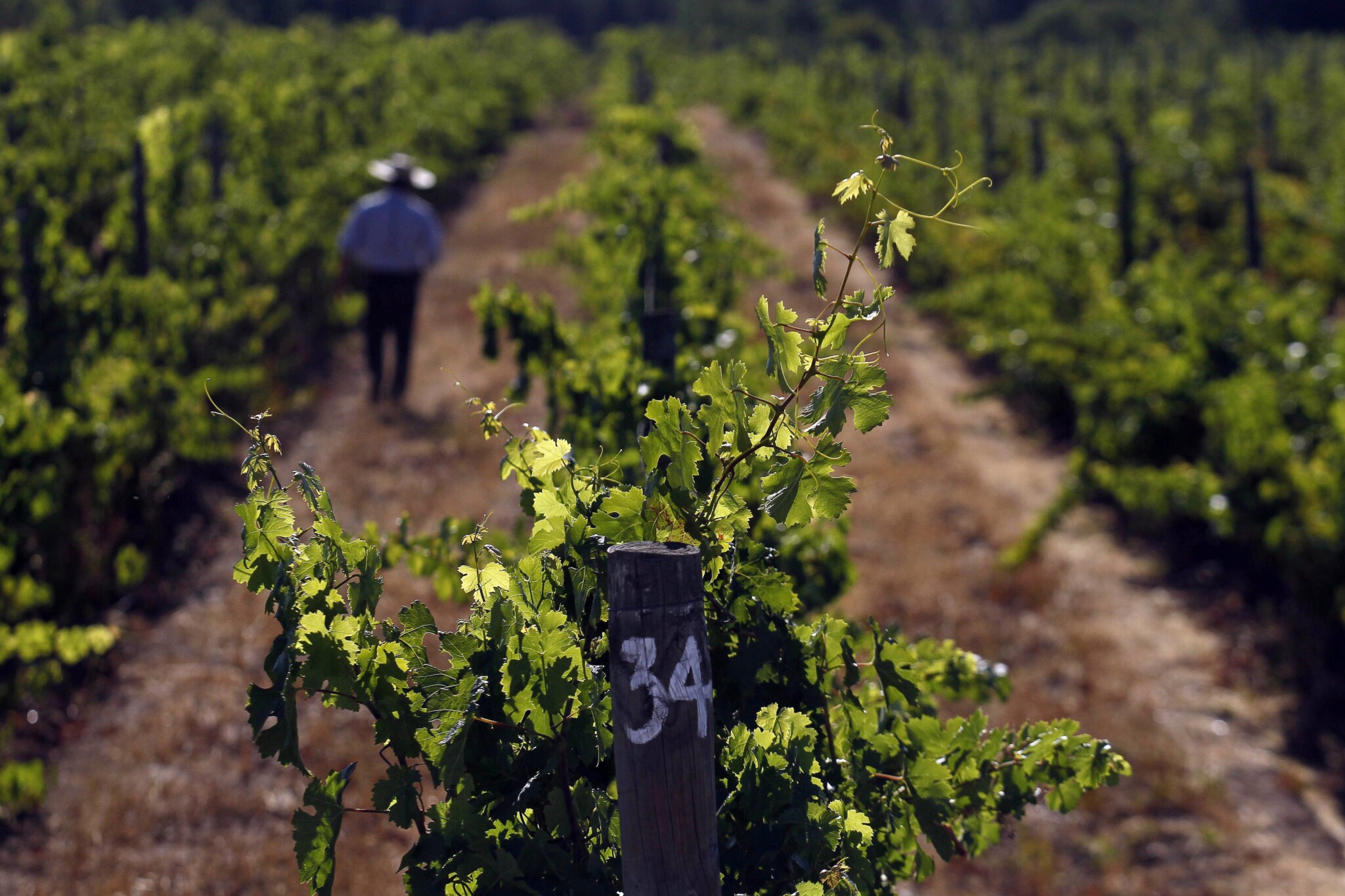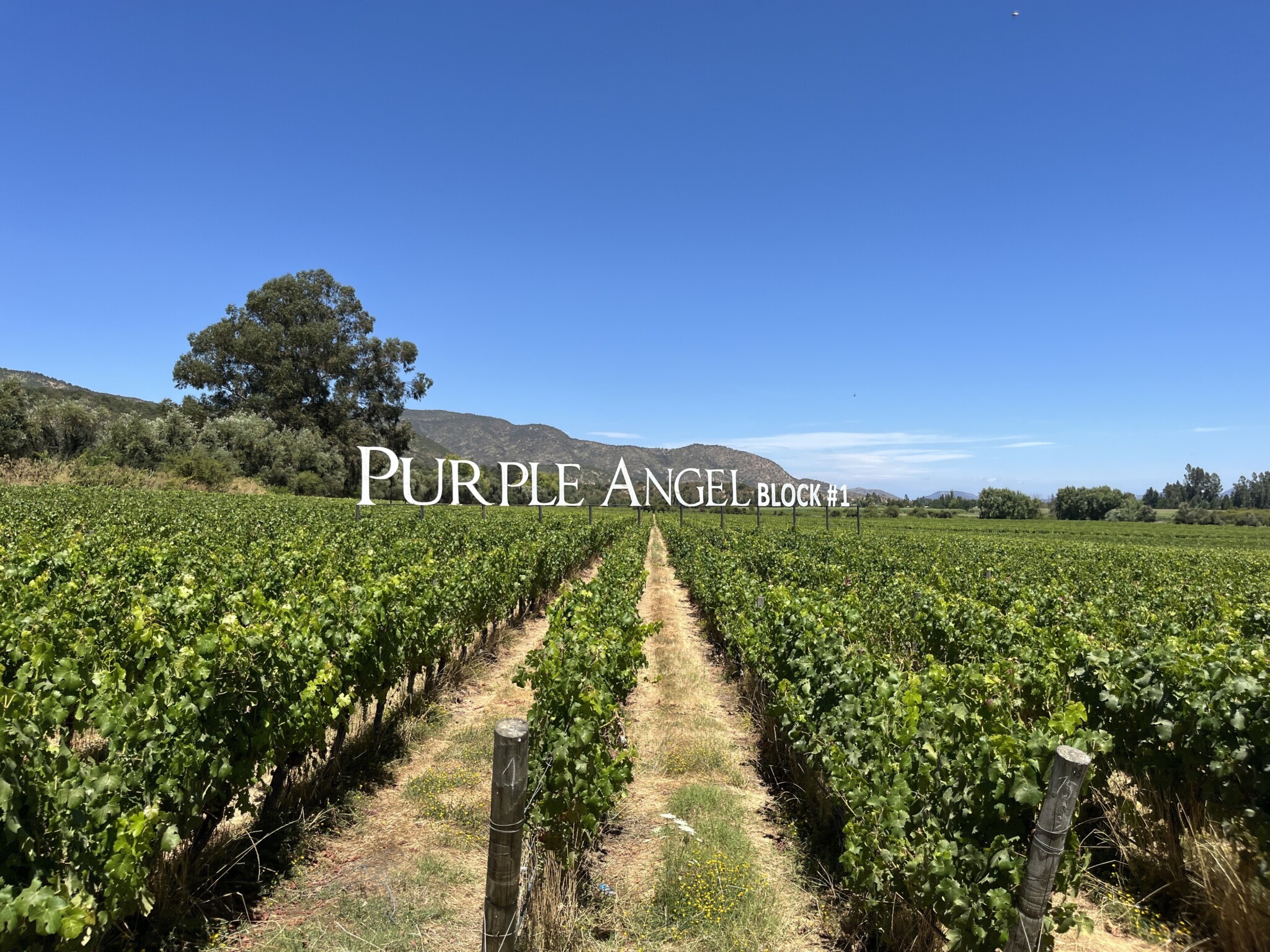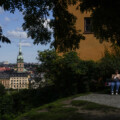There are two kinds of press trips for wine: room or van. The former is typical of investigations of a relatively small wine region, or they’re focused around a central event, like a trade show. They are in a singular location. On a room trip, one checks into a hotel room and unpacks one’s bag filled with the comforting knowledge that one will be sleeping in the same bed every night.
A van trip offers no such security and the bag is never unpacked because there’s a new hotel room every night. One’s home for the succession of days is the van, and hundreds of kilometres a day on the road. A van trip is the only way to get to know a big wine area like, for instance, Chile.
When I accepted an invitation and a plane ticket from Wines of Chile to tour the country’s vineyards and wineries a few weeks ago, there was no question that it would be a van trip. I knew that what I wore to breakfast would be what I wore to dinner. Van trips are hard traveling, but you get to see the world.
Here are sketches of some of the wineries I visited over the five days that I ran around the wine-making valleys of Chile. When I get back to Chile on my own steam, I will surely rent a car and retrace some of these steps.
Santiago
Descriptions of wine in Chile often begin by saying that the country has only become an important exporter since the last decades of the 20th century. While that’s true, it belies the country’s long-established wine culture. Chile was a Spanish colony, and Spain, unlike Great Britain, made more than enough wine on its own. The Imperium had no need for wine imports and, in fact, outlawed exports.
Once Chile achieved its independence from Spain in the early 1800s, its landed aristocracy and nouveau riche began looking to France to plant noble vines on their country estates, like the well-known wine brand Santa Carolina. Established in 1875 by a well-to-do gentleman from Santiago, the old Spanish colonial-style house and winery Santa Carolina is now actually in the suburbs of the capital, Santiago.
There, on top of the old cellars, one built in homage to Bordeaux, the other Burgundy, my van load of Canadian wine writers tasted through eight Santa Carolina wines with oenologist Alejandro Wedeles. The wines ranged in price from $20 to $100 a bottle and included one made from the rare grape, Romano or César. The star of the show was the 2019 Herencia made with 90 percent Carménère, Chile’s signature red grape, showing trademark notes of dark cherry and cocoa.
Maipo Valley
The Maipo River runs close to the capital, and its valley marks the beginning of Chilean viticulture. The estate of Casa Real, home of another famous Chilean wine house, Santa Rita, is in Maipo, which I wrote about in my last column. Another grand estate and winery there is Tarapacá, founded in 1874. There we had lunch on the lawn, next to the pool, by the grand manor house, which is also a hotel.
Winemaker Sebastián Ruiz led us through a tasting of a dozen wines, including the 2022 Gran Reserva Cabernet Sauvignon, which is exported to Canada. Forward with deep black fruit notes, completed by savoury herbal character, it’s hard to believe this wine retails here for around $20.

In this Jan. 25, 2014 photo, a man walks through a vineyard in Maule Valley, Chile. Luis Hidalgo/AP Photo.
Colchagua Valley
Moving further south of the capital is the Cochagua Valley, where we visited the organic winery of Emiliana at Los Robles. There winemaker Noelia Orts took our van group up the foothill of the Andes to where the vines stopped and the forest began, to show us the cooling influence of the scrubby bush. Orts’ 2021 Coyam Red Blend, dominated by Syrah, showed a lovely balance between elegance and Mediterranean rusticity. It made me hungry.
Montes is another big Chilean brand well-known to wine enthusiasts. Their modern Colchuaga winery is appropriately impressive, and it centres on a wood fire grill restaurant run by South America’s most famous chef, Francis Mallmann. What better pairing with Montes’ iconic Purple Angel 2021, arguably Chile’s most famous Carménère wine? Here the grape shows, well, purple fruit (blackberry) and a seasoning note of coffee.
Millahue (Cachapoal) Valley
The valley-floor winery and the hilltop luxury hotel at VIK could easily be the set of a James Bond villain’s lair. But it’s only good works at this ultra-organic, super sustainable winery run since its establishment in 2004 by winemaker Cristian Vallejo. For all of Vallejo’s very fancy, pricey fine wines, what I remember most was the first one we tasted, the 2023 “Cabernet Nouveau,” a delicious, light, and fresh red fruit expression of the grape, with notes of hibiscus.
Maule Valley
The Spanish winemaker and label Miguel Torres (Empedrado) has been working in Chile since 1979. The Empedrado vineyards and winery are perched on a series of steep hills on a remote logging road 25 kilometres from the Pacific Ocean. In the 1990s, the cool sea breezes convinced Torres that this would be site of his flagship Chilean Pinot Noir, L’Escaleras de Empedrado. Tasting through the 2013 and 2018 vintages, one could see why: there’s energy and resonance in these wines from the edge of Chile’s wine country.
Leyda and Casablanca valleys
Just to the west of Santiago and close to the old port city of Valparaiso are the Leyda and Casablanca valleys, where the cool Pacific breezes and famous Camanchaca fog make them a centre of white wine production. At Leyda, the riders of the van enjoyed cool-climate Pinot Noir and Sauvignon Blanc with a morning snack of two kinds of ceviche, all within view of the ocean. Breakfast of the champions.
A little further north in Casablanca at Casas del Bosque we tasted through a dozen wines with Italian expat winemaker Alberto Guolo, whose Sauvignon Blancs hovered between lush New World tropical fruit and Old World citrus precision. These were food wines, and we were glad to ride bicycles down from the tasting room to the winery complex that houses three different restaurants, each made to compliment a line of the Casas del Bosque wines.
Our last stop in the van was with winemaker Marcelo García at the Algarrobo vineyard for TerraNobile. We were greeted with a glass of the 2024 Algarrobo Chardonnay standing in a row of vines that had grown it the year before. Fresh, fancy, and lemon fruit forward, the Chardonnay was a palate cleanser and cool reprieve from the summer sun burning in a cloudless Chilean sky. It was certainly worth the drive.










